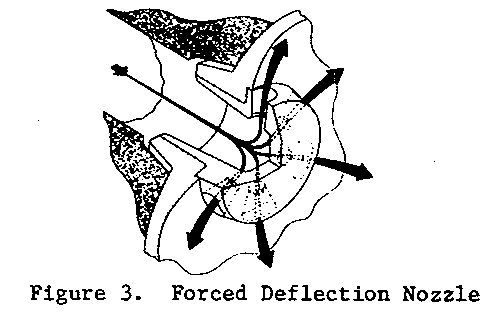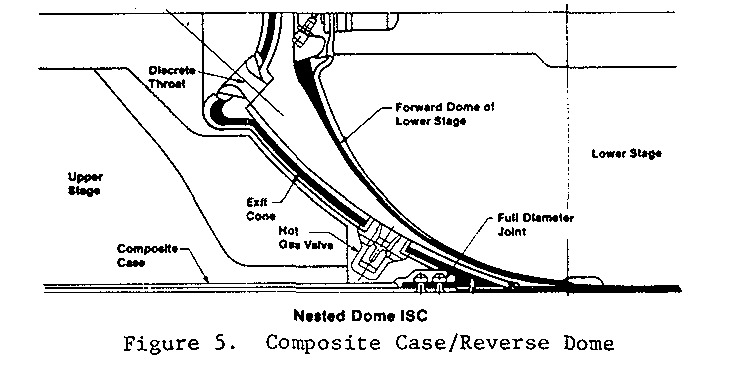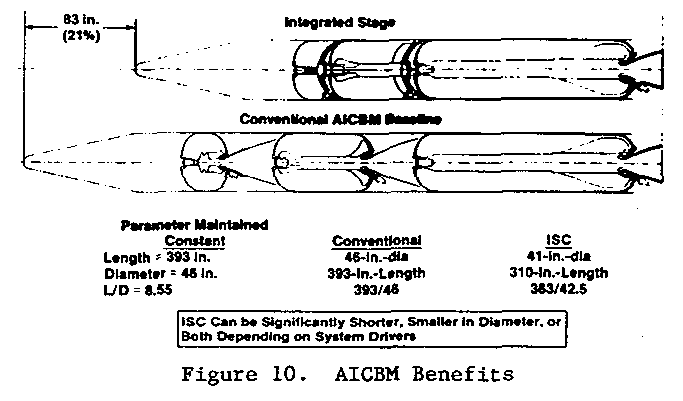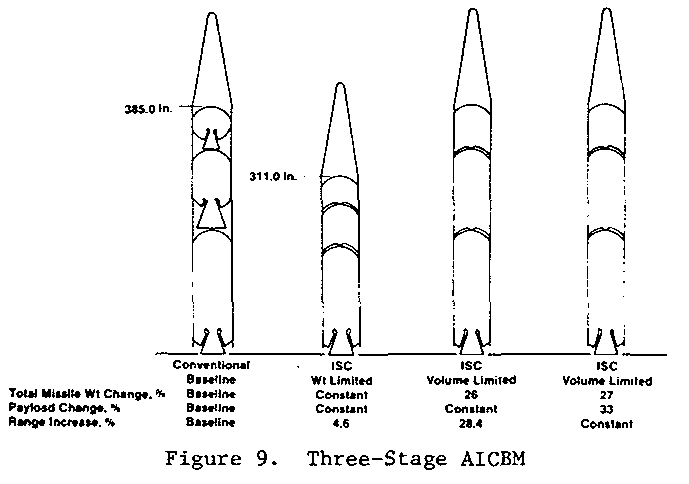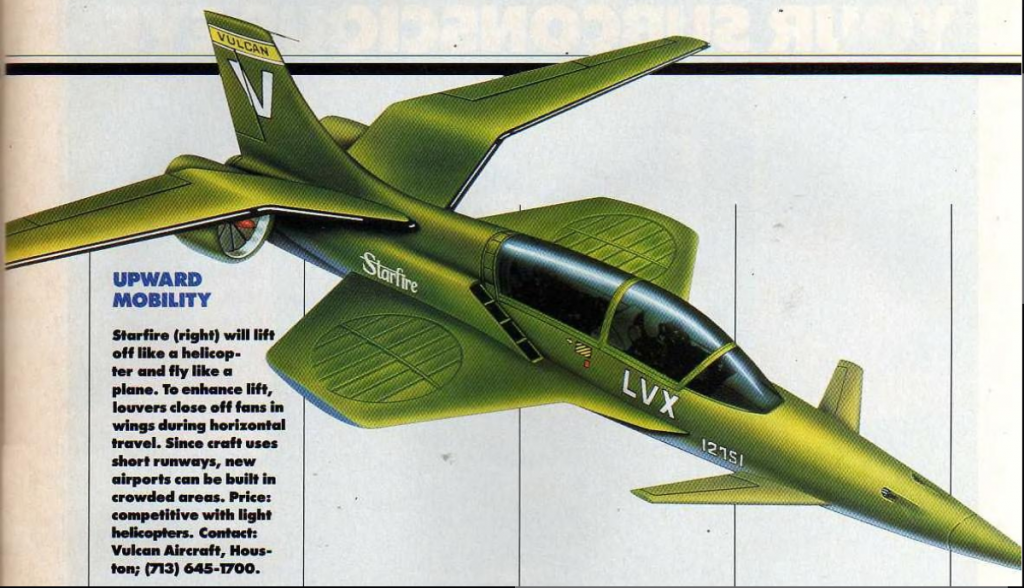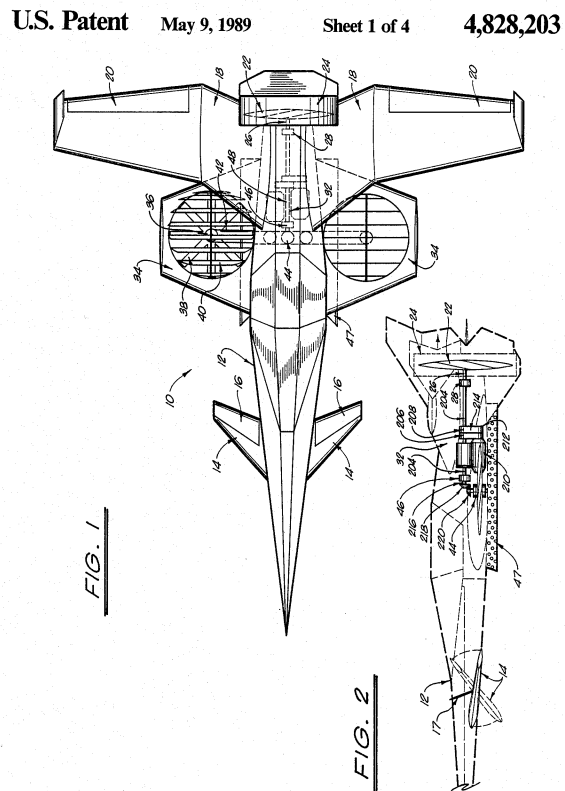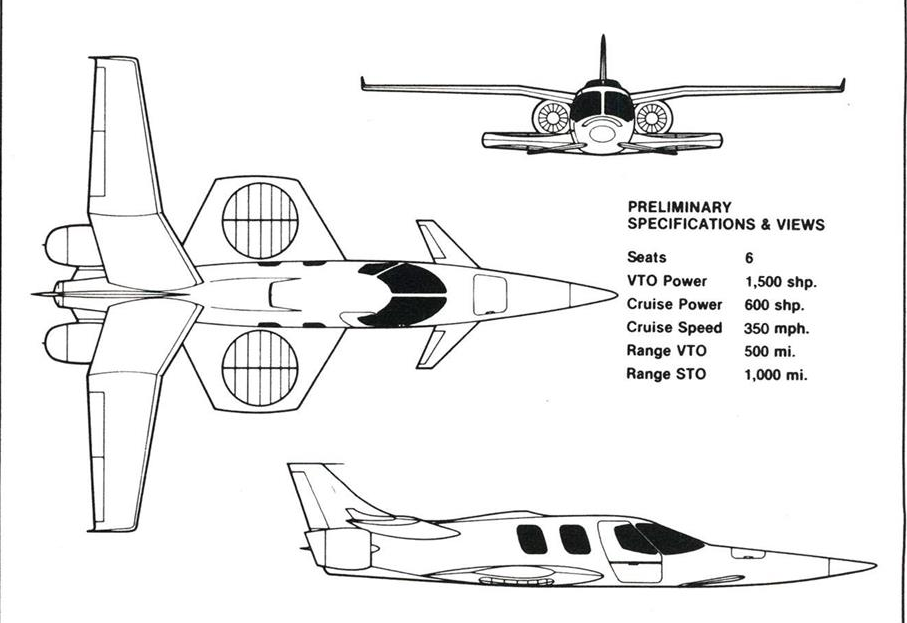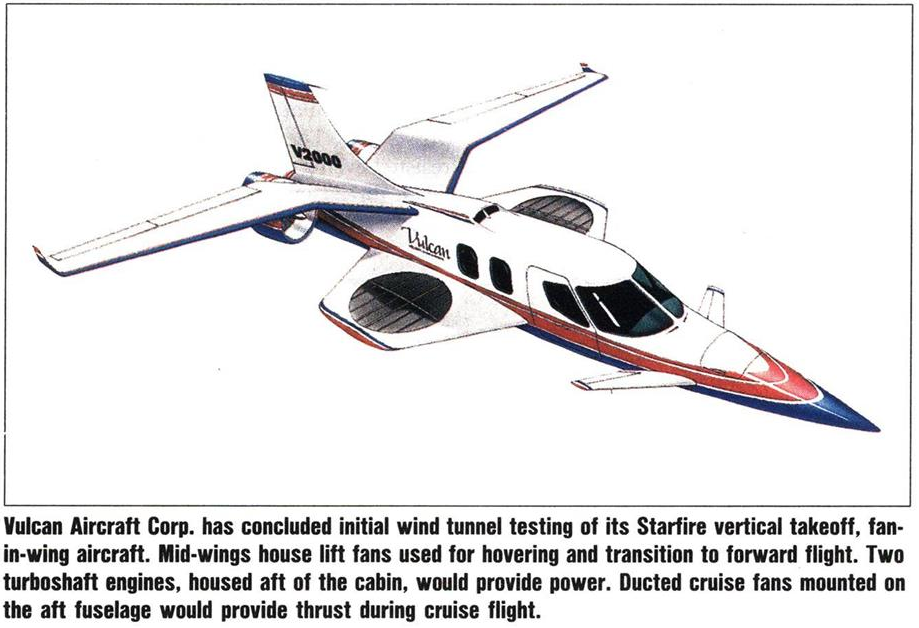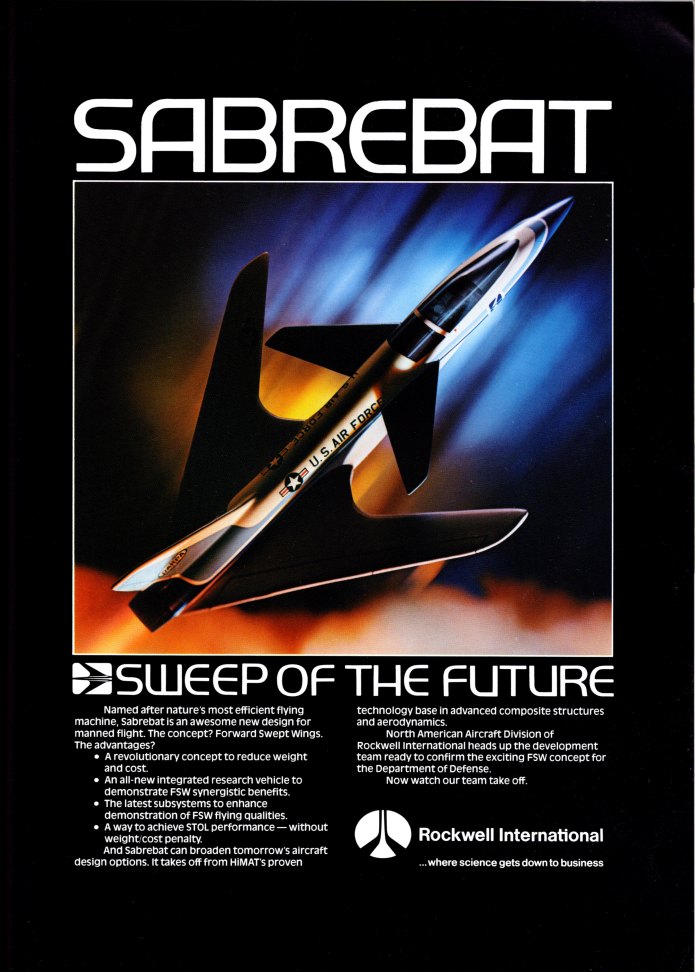There are several ways to accomplish the goal of extracting maximum performance from a solid rocket motor via the nozzle. The most common way – a convergent-divergent nozzle – is the standard for a reason: it’s the simplest, lightest most reliable way to do it. But there are alternatives that provide specific advantages. One of them is the “forced deflection nozzle.” Instead of a single circular throat, the nozzle has several; instead of directing the exhaust gas due aft, it forces it “sideways” to smack into the broader, shallower nozzle.
The advantages here:
1: The nozzle is sort of a hemispherical bowl, rather than a long, slim cone or paraboloid.
2: It provides some altitude compensation, similar to an aerospike.
There are also disadvantages, not least of which is that the throat is now under substantially greater thermal and dynamic forces. Few materials known to Man will be able to long withstand the high heat load and erosive forces. But in 1986, Aerojet proposed to develop such a nozzle for a singular purpose: to integrate into future ICBMs. The reasoning was… the bowl-like nozzle fits the bowl-like forward dome of the lower stage. Instead of a long interstage structure being required, the stages fit together neatly. in principle this would allow ballistic missiles to be more compact, shorter by useful distances. This is not very important for space launchers, but for missiles that need to fit into silos, submarines, bomb bays or Shuttle cargo bays, extra space means extra capacity.
Diagram showing a conventional 3-stage solid rocket ICBM against three concepts making use of the forced deflection nozzle. You could have a much shorter vehicle with equivalent weight and payload, or same-length boosters with 28.4% greater range for the same payload, or 33% greater payload for the same range.
Sadly not a lot of info on this. The Vulcan Aircraft (Houston, TX) “Starfire” concept from the mid/late 1980s used lift vans and vectored thrust for VTOL. Both military and civilian uses planned. Seems kinda reasonable, if perhaps a bit light on power, The basic design seems like it might be more practical today, though of course someone would try to make it all-electric.
Grumman won the contract to build the forward-swept-wing X-29. But Grumman was not the only company to go for the contract; Rockwell devoted a fair amount of effort – both engineering and PR – to win the prize. Their concept was similar, though intended to be a wholly new aircraft, and with a notably different planform. Below is a magazine ad from 1980 showing a model of the Rockwell “Sabrebat” concept.
The full-rez scan has been uploaded to the 2023-10 APR Extras folder on Dropbox for $4 and up Patreons/Subscribers. If you would like to help fund the acquisition and preservation of such things, please consider signing on either for the APR Patreon or the APR Monthly Historical Documents Program.
